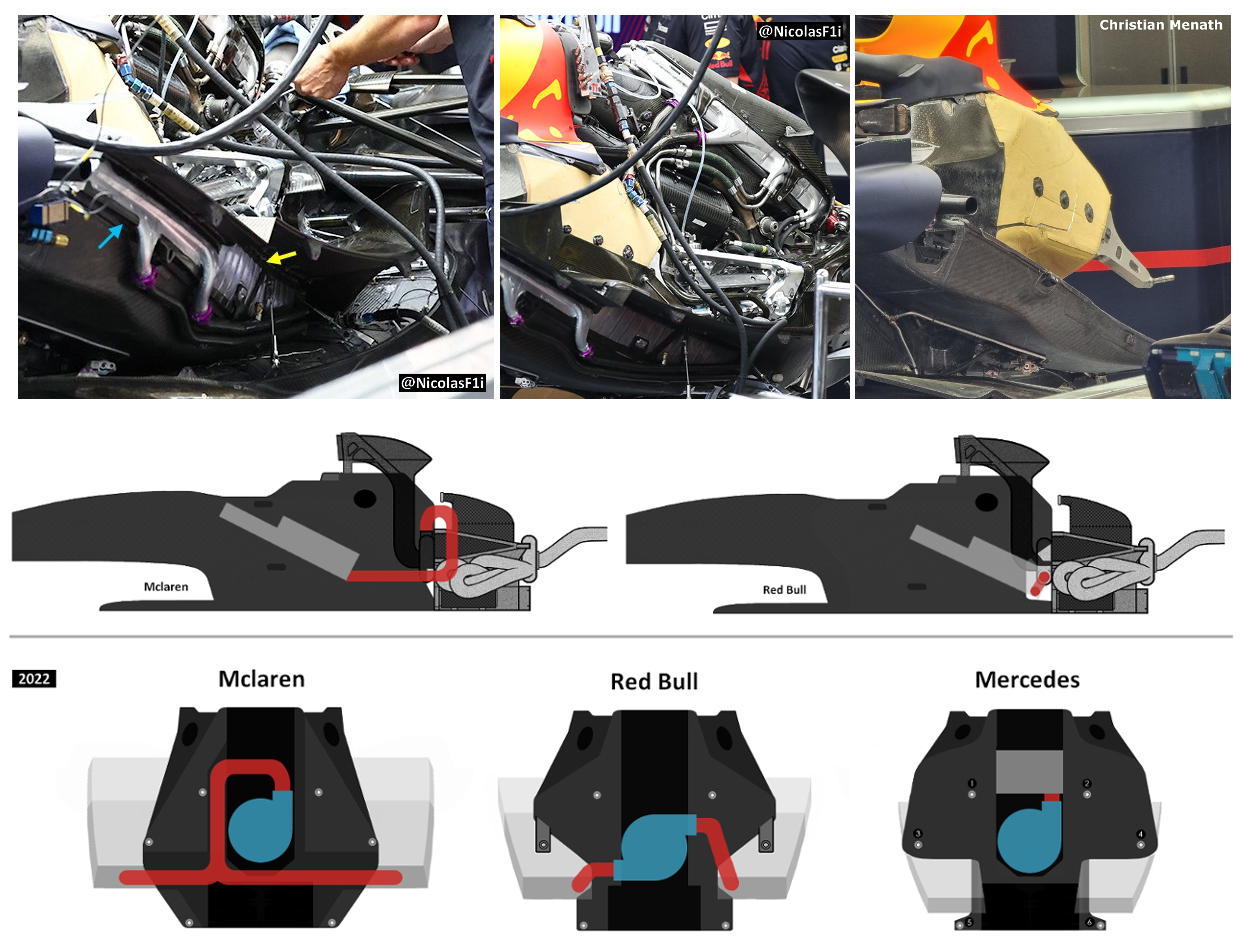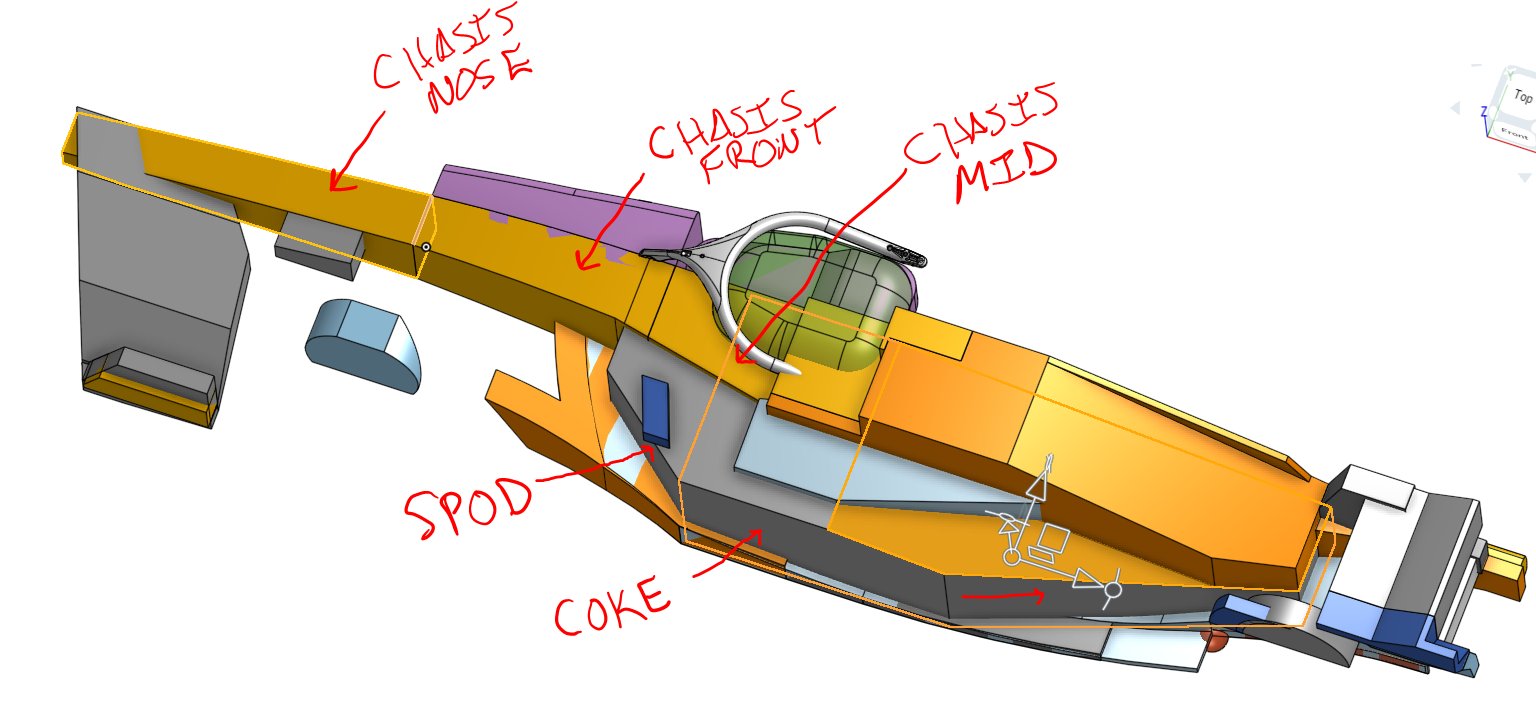My wholly amateur eye-ball CFD take on the mega-lips (ignoring if they are over or under and where any number of slots might end):
The whole point of the very far out there lip might simply be to extend the lip start as far forward and as far up as possible.

Notice that, new from last year, a lot of lip is as far up as possible now. It stays there for a while.
To me, this is a very simple attempt to pack as much air as possible under the lip, partially bound by the Rauch panel. (The Rauch panel mostly fences air under the floor but a bit over the floor as well?)
This follows a bit on Vanja's inlet spill post:
viewtopic.php?p=1186026#p1186026 but I think that the inlet spill is only a second order effect.
The amount of air "trapped" under the lip, to the side of the cockpit, is massive, is it like 50x50 cm2 each side? And with the cockpit and sidepod, it is forced to shrink both vertically and horizontally to something like 30x10 cm2 in the underbite.
That is (say) 2500 cm2 of cross section forced to try to fit in 300 cm2 of cross-section under the sidepod. It is like a funnel cut in half. Sure, some air acceleration in the undercut will happen, and thus it will take more flow than its share, but most of that air will be forced down and (yes, to spill) sidewards... onto the whole floor flick bonanza.
That air has been accelerated downwards and aggressively pushed sideways, and thus it mimics the effect of the old Y250 vortex for "floor sealing".
I had that feeling already last year, and now that the small kink in the cockpit edge under the sidepod is gone and the undercut is bigger, they tried to go to the absolute maximum extent of air "trapped" under that lip, because as more air, beneficial to the rear, goes under the sidepod, they needed a bit more air to go sideways over the floor edge.
It might be too simplistic, but the RB evolution has been in that direction since 2022, and it is one thing that other teams did not have until very recently, with McL and now Aston somewhat following suit but a few steps behind.
It is only IMO, but maybe this is a performance differentiator, at the macro-flow level, rather than micro-details. The micro details in the floor edge then simply take advantage of this extra outwards flow.





